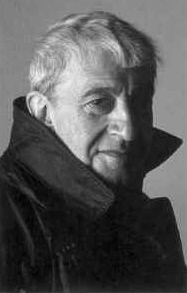 |
Sir Kenneth Macmillan
|
Today at
Ivy House, the
former home of Anna Pavlova, a minor miracle occurred.
Donald MacLeary, one of the stars of my youth, restored a fragment of Sir Kenneth MacMillan's ballet
Le Baiser de la fée before my eyes.
The idea of restoring one of Sir Kenneth's early works was that of his widow, Deborah. She and Clement Crisp had been invited by Ivy House Music and Dance to discuss Sir Kenneth's legacy at the
London Jewish Cultural Centre. In February I had attended an interview by Mr Crisp of Dame Antoinette Sibley at the Royal Ballet School which had also been organized by the Centre (see
"Le jour de gloire est arrive - Dame Antoinette Sibley with Clement Crisp at the Royal Ballet School 3 Feb 2014). Though this event also involved Mr Crisp and included some fabulous ballet it was very different from the interview with Sibley.
The main difference is that it was not really an interview or even a dialogue. It was more a monologue by Mr Crisp with some choice interventions by Lady MacMillan. It was through her that we learned that the great choreographer relieved tension by knitting. He would begin a new garment with every ballet and then abandon it as soon as the ballet was finished. Lady MacMillan told him that she would never wear any of his creations and she never did because the ballet was finished before the knitting. When Mr Crisp discussed Sir Kenneth's inventiveness Lady MacMillan reminded us of his reverence for Petipa. Lady MacMillan told us that Sir Kenneth did not say much but when he did it was generally devastating. Clement Crisp for his part reminded us of Sir Kenneth's musicality, the dark side of many of his ballets such as
The Judas Tree and curiously of his knowledge of things that he should not have known about. I liked that format and learned a lot from both speakers.
A short interval followed the discussion after which the room turned into a rehearsal studio. The choreologist Diana Curry introduced the audience to
Benesch notation. Although the technique was quite new in the 1960s Sir Kenneth always worked with a choreologist and much of
Le Baiser de la fée had been recorded. However there was a significant lacuna and that was the solo where the bridegroom danced by MacLeary goes looking for his bride and finds himself waylaid by the fairy. Fortunately that scene had been recorded on film which Ms Curry had analysed and notated.
The role that Sir Kenneth had created for MacLeary was danced by
James Hay, a soloist with the Royal Ballet. Ms Curry had taken Hay through her recording earlier in the afternoon. When I first saw him in the late 1960s and early 1970s MacLeary was easily the handsomest of the Royal Ballet's principals and I was delighted to see that the years had been kind to him. Even after 45 years he remains a very good looking figure now. He invited Hay to dance the solo as he understood it. "Too classical" said MacLeary "You are looking for your beautiful fiancée. Be more natural." Though MacLeary complimented the choreologist on her work it was not exactly as he remembered it with the result that the piece was less than a perfect recreation. But it was good and to bring back to life a ballet created years before Hay was born was to my mind nothing short of a miracle.
This afternoon was special in so many ways. Special in re-creating a beautiful ballet. Special for the insights into MacMillan's work and personality from those who knew him best. And special for taking place in the home of one of the greatest dancers of all time. Had there been no Lady MacMillan or Clement Crisp, had there not been a step of dancing, the experience of being in a room in which Pavlova once walked would have been memorable enough for me.


